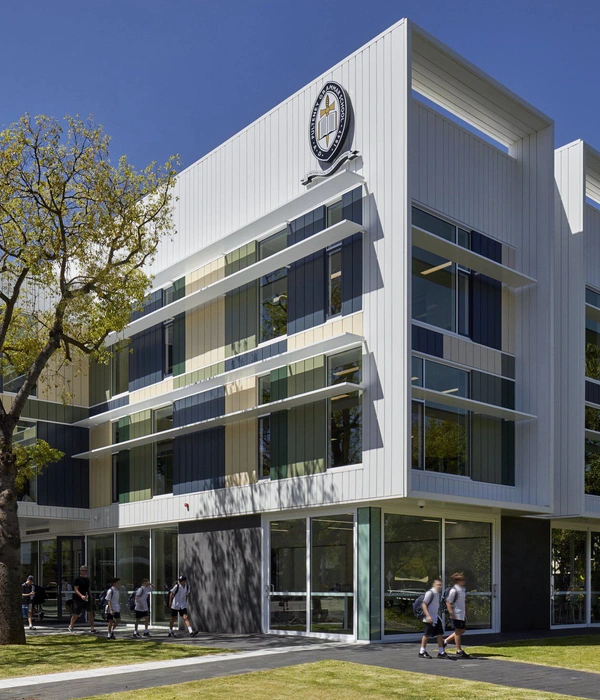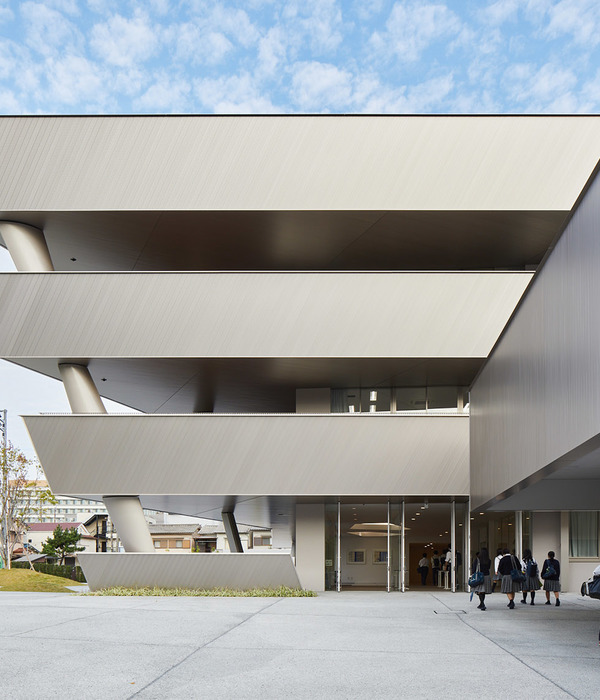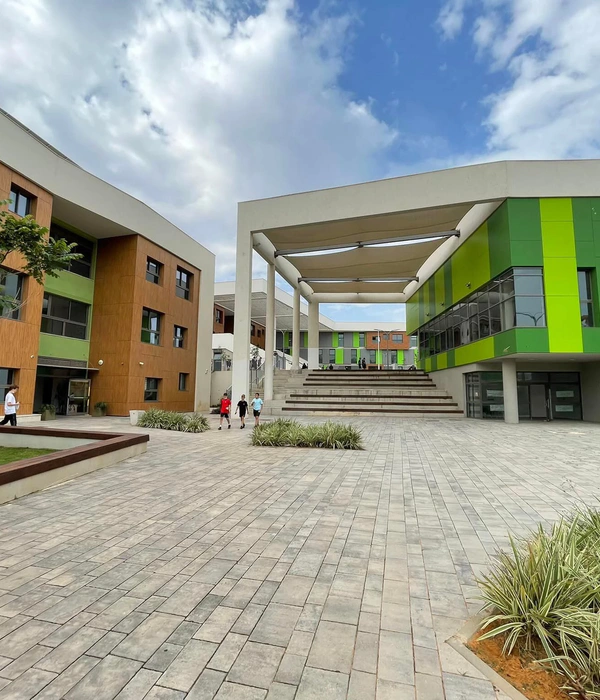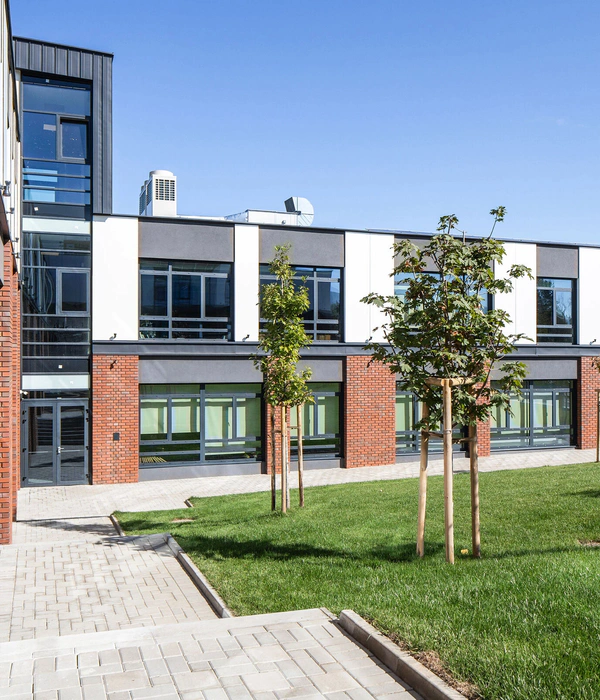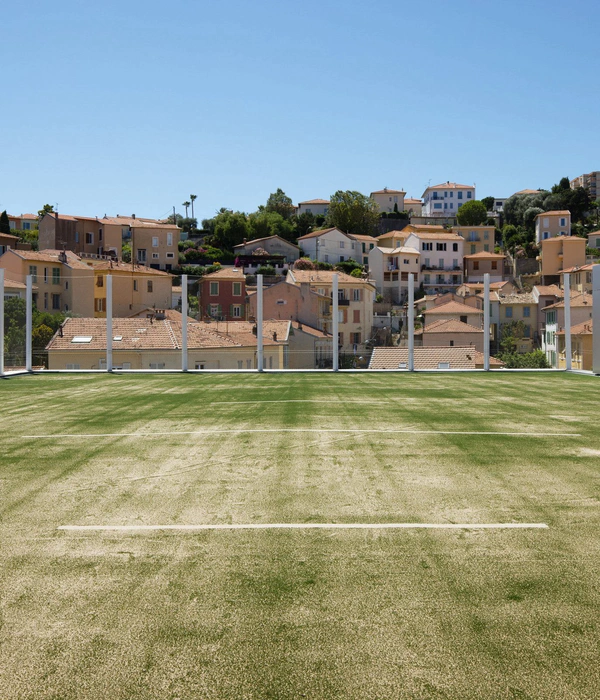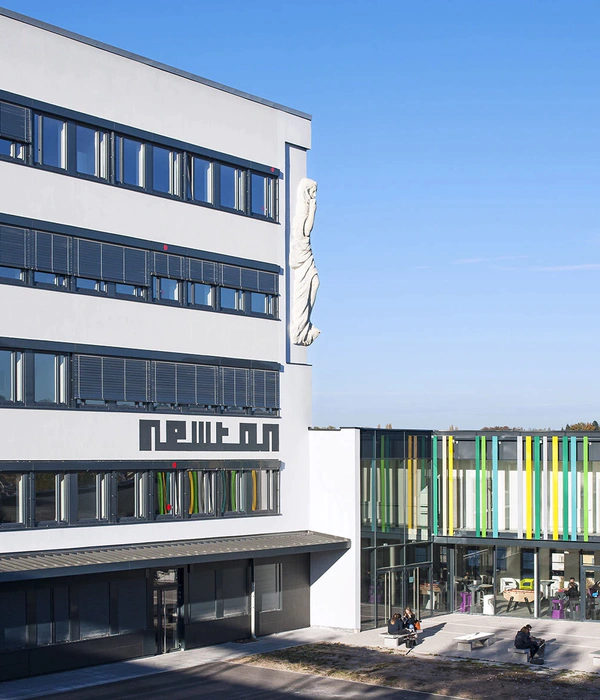Sixthriver and Studio Ma Architects completed a renovation to the existing Manzanita Hall at Arizona State University and turned it into luxury student housing in Tempe, Arizona.
Manzanita Hall has always occupied a prominent place in the Arizona State University skyline. Despite the close proximity to Frank Lloyd Wright’s Gammage Auditorium or Antoine Predock’s Nelson Fine Arts Center, anyone that has visited the area can’t help but be aware of the 1960’s icon which has housed students for a half century. In 2010, the decision was made to renovate the aging residence hall to meet expectations of today’s college students. The resulting carefully detailed addition and interior renovation embraced the expressive modernist structure with reverence, while creating a vitality that welcomes new students.
Unlike dorms of the past, the newly renovated coed freshman hall includes amenities such as a state of the art fitness center, business center, and University programmed academic space. The basement level includes recreational and gaming lounges in addition to private study rooms. Residential dwelling units were transformed to the more contemporary suite style with double occupancy rooms and shared bath. Within the residential tower, every two floors are connected with a communal kitchenette, laundry, study rooms and neighborhood lounges to support modern student life. Mechanical systems were replaced and upgraded with efficient energy systems.
The ground floor features the original terrazzo floor, providing an understated backdrop for the contrasting custom walnut wall material, consistent with the era of original building. A subtle finish palette of white, silver, and grey are balanced by the bold intersection of color and patterns inspired by the local landscape. The original geometric concrete structural lattice inspires many of the patterns and forms in the custom carpeting, lighting and commissioned artwork throughout the adapted design.
Beyond the obvious facelift required for the aging interior, American Campus and Sixthriver wanted to embrace the iconic structure. The need for natural light in the common areas was immediately apparent during early tours of the existing building. Additionally, the building was compartmentalized, lacking the open connected spaces needed to create cohesive communal amenity areas that are so important in a modern residential hall.
An addition to the tower allowed for the two-story communal spaces to serve every two levels of dwelling units. An expansive north facing curtain wall floods these spaces with the natural light the building needed, without absorbing the heat of the desert. An overt demarcation between old and new was created by leaving the existing concrete lattice exposed where the original façade became interior space.
The ground floor lobby required controlled access between the resident entry and a dining hall which serves all University students. A sinuous custom steel and eco-resin screen wall minimizes the visual separation between spaces, while controlling security access at this critical point. As residents move through the lobby, the visual perspective of the wall changes color and opacity. This wall also creates a continuity of texture by mimicking ribbed concrete surfaces on the building’s exterior.
Rigorous detailing and elegantly articulated materials define the interior spaces. Once dimly lit rooms are now filled with generous light and color. These consistently simple, expansive, and vivid spaces create connectivity throughout all public spaces, giving this important icon life well into the 21st century.
Architect: Sixthriver, Studio Ma Architects Contractor: Hardison-Downey Photography: Bill Timmerman
9 Images | expand images for additional detail
{{item.text_origin}}

